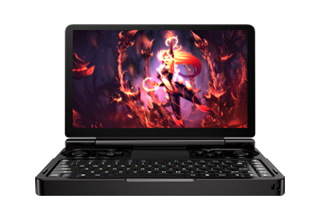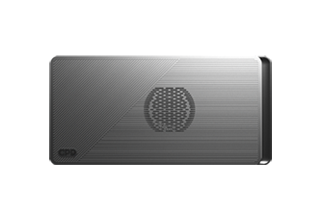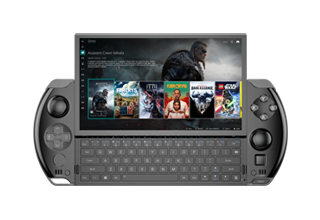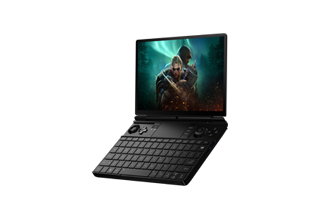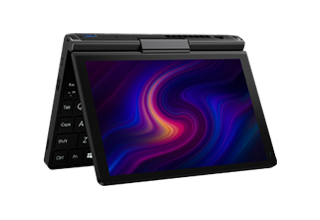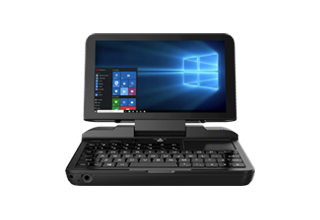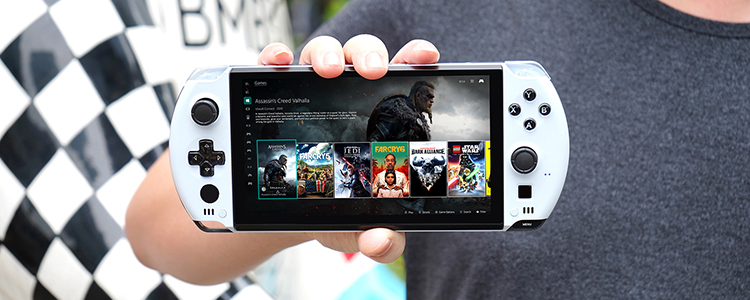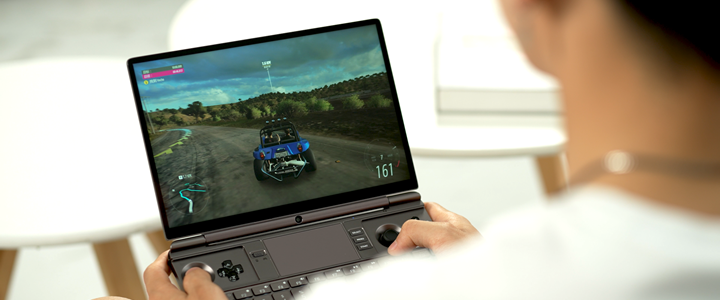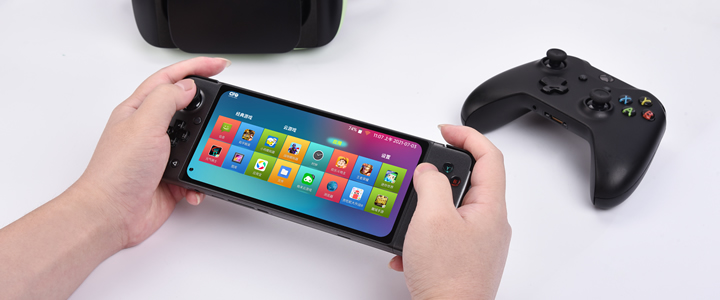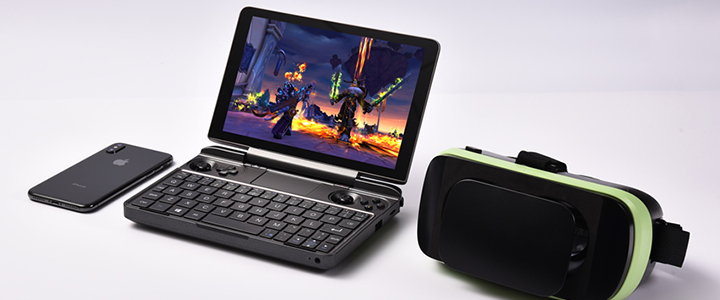GPD Micro PC: Can a 6-inch Ubuntu Laptop Really Be Usable?
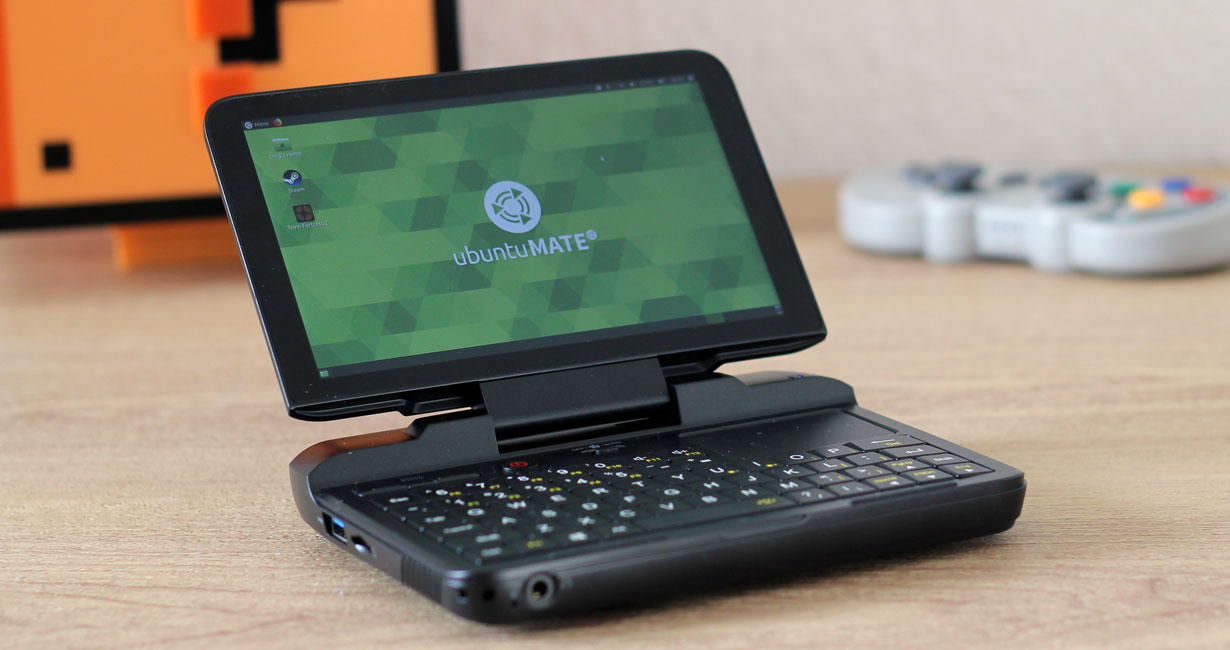
When I first heard about the GPD Micro PC, the 6-inch laptop crowdfunded into reality earlier this year, my overriding impression was one of confusion.
It’s not that GPD, a China-based hardware outfit, aren’t skilled at creating diminutive devices that appeal to gadget heads like myself as, clearly they are: both the GPD Win 2 and the GPD Pocket 2 were warmly reviewed by many.
It’s just that I thought that a laptop this small simply wouldn’t be usable.
6-inch screen? What a squint fest! Blackberry phone-style keyboard? Typo city! Intel Celeron processor? What is this, a Chromebook?!
And yet…
After a week of using the GPD MicroPC (with Ubuntu MATE) as a companion device alongside my regular, full-sized computers, I have to say that I totally get it.
This thing is nuts.
GPD MicroPC Review
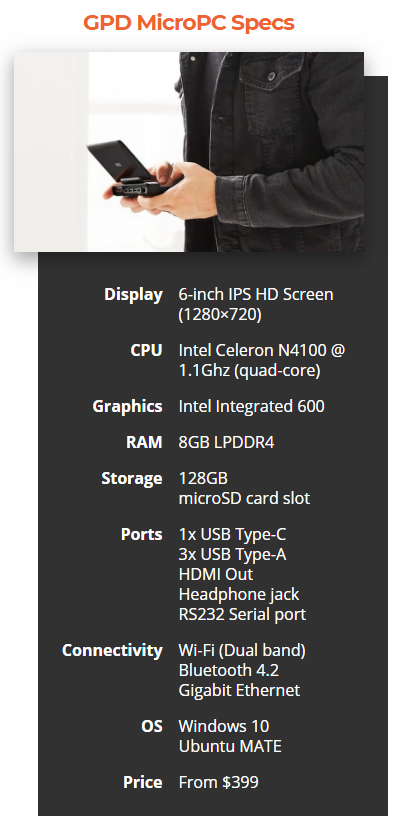
GPD is no stranger to the UMPC scene having created two versions of its ultra-portable GPD Pocket notebook and two versions of its clamshell GPD Win gaming device.
But having catered to portable gaming fans and coffee shop web surfers I was left wondering: who is the GPD Micro PC aimed at?
And, that’s where things get interesting.
This device isn’t “super powerful” or “super sleek” or any other approbatory combination. But it is the most affordable and accessible sub-notebook GPD has released to date.
And some of the design choices GPD have made make this thing totally unlike anything else.
Micro PC, Max Performance
On paper the GPD Micro PC specs — which should listed in an info box floating around this article somewhere — do not sound make it sound like a screamer.
But let me tell you: it’s far from being a slouch.
The Intel Celeron N4100 processor is a quad-core ‘Gemini Lake’ chip running at a base frequency of 1.10Ghz with a max burst speed of 2.40 GHz. This chip has 4 threads and a cache of 4 MB, which isn’t too shabby all things considered.
BUT it gets better.
Thanks to some terrific thermal tinkering by GPD, the Intel N4100 CPU is able to operate at a maximum 10W draw rather than Intel’s recommended 6W. This gives the Micro PC a major speed boost when compared to other portables powered by the same chipset.
The GPD MicroPC also ships with 8GB of RAM. This is the “minimum” amount of memory I’d expect in 2019, but also the “maximum” amount of memory that this SoC supports — and in this form factor, with the kinds of tasks that will be asked for it, it’s ample.
You can upgrade the 128GB SSD (just pop off the back of the device to access it) but I find it to be fast enough as it is, with decent write and read speeds.
Plus, as I keep saying: this device isn’t going to be your new workstation so you don’t need oodles of space (and there’s a microSD card slot on the side of the MicroPC that supports up to 512GB cards).
Replaceable M.2 storage: I like that. No, it’s not NVMe but, for $399 — though this thing can be found for a bit less — are you gonna complain?
Connectivity is also well catered to thanks to dual-band Wi-Fi, Bluetooth 4.2, and even support for Miracast (though I’m yet to test the latter).
Features a serial port!
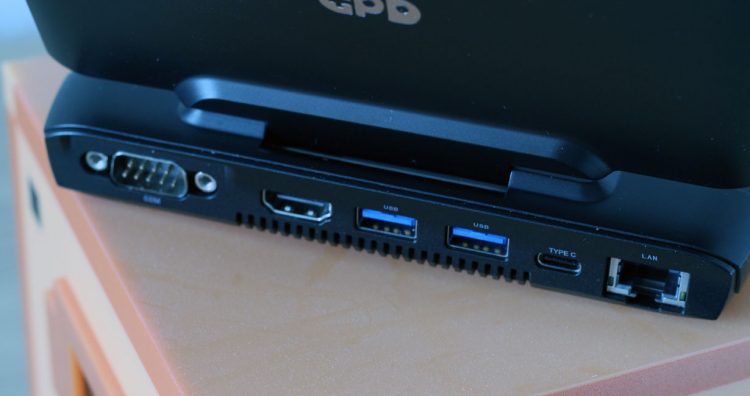
The GPD MicroPC has more ports than some countries.
You get 3 regular USB 3.0 ports; a rear USB Type-C port (which handles charging, data and display); a full-size HDMI out; and — cherry on top — an RS232 serial port.
Admittedly the inclusion of a serial port isn’t going to wow the pants of most modern computer folks (the only serial I interface with is the breakfast variety) but to IT bods, business folks, and enterprise administrators this port is still very much part of everyday life.
Though superfluous I appreciate the juxtaposition of the über modern USB Type-C and the comparatively old-school serial port gives the micro a little more nuance; this is a truly everyman (and woman) device.
Or to frame it another way: the GPD MicroPC is the ONLY device in this field, in this size, in this form-factor, offering a serial port.
The Micro PC is cooled by an internal fan. This isn’t (to my ears) particularly noisy, but it’s audible. If you want to work in total silence you can switch to passive cooling because —awesomely — this thing has a switch to turn the fan off!
I didn’t experience any issue relying on passive cooling, though the device does warm up quikly — and remember: the warmer the device, the shorter the runtime, so make clever use of the built-in cooling fan to maximise your milage.
Industrial Niceties
It’s important to remember that this device is pitched as a serious computer and not a novelty (like, arguably, the mini-Macbook that is the Pocket 2 is).
And there are reminders of this over this device. There’s the aforementioned serial port, the ruggedised casing (more on that in a second) and the inclusion of two copper nuts on the back of the device allow for easy mounting in “industrial” environments. Not something I’d use, but nice to see.
Along the same lines, the MicroPC boasts a power indicator, a dormancy indicator, and an RJ45 indicator (ethernet) on the rear. These help keep you up to speed with what the device is doing, even when it’s closed or you’re not actively using it.
-
GPD WIN 4: Smallest 6800U handheld Console
The World's Smallest Handheld Console Powered By AMD 6800U With A Slider Design, Running Windows 11 And Supporting SteamOS
넶576 2023-06-03 -
GPD WIN Max 2 Handheld Gaming PC 4G LTE AMD 6800U
GPD WIN Max 2 Handheld Gaming PC 4G LTE AMD 6800U
넶1191 2023-01-30 -
Pocket 3: A Modular and Full-featured Handheld PC
Pocket 3: A Modular and Full-featured Handheld PC
넶734 2021-12-01 -
GPD XP: World's First Modular Android Game Console
GPD XP: World's First Modular Android Game Console
넶720 2021-12-01 -
WIN Max 2021: Handheld Game Laptop for AAA Games
“Handheld Game Laptop” is a concept proposed by GPD and GPD is the only practitioner. It has been proved that WIN Max is an excellent choice for users who like large-screen handheld devices. The concept of all in one enables it not only to be used to play games but also to replace laptops for office work.
넶3493 2021-06-10


